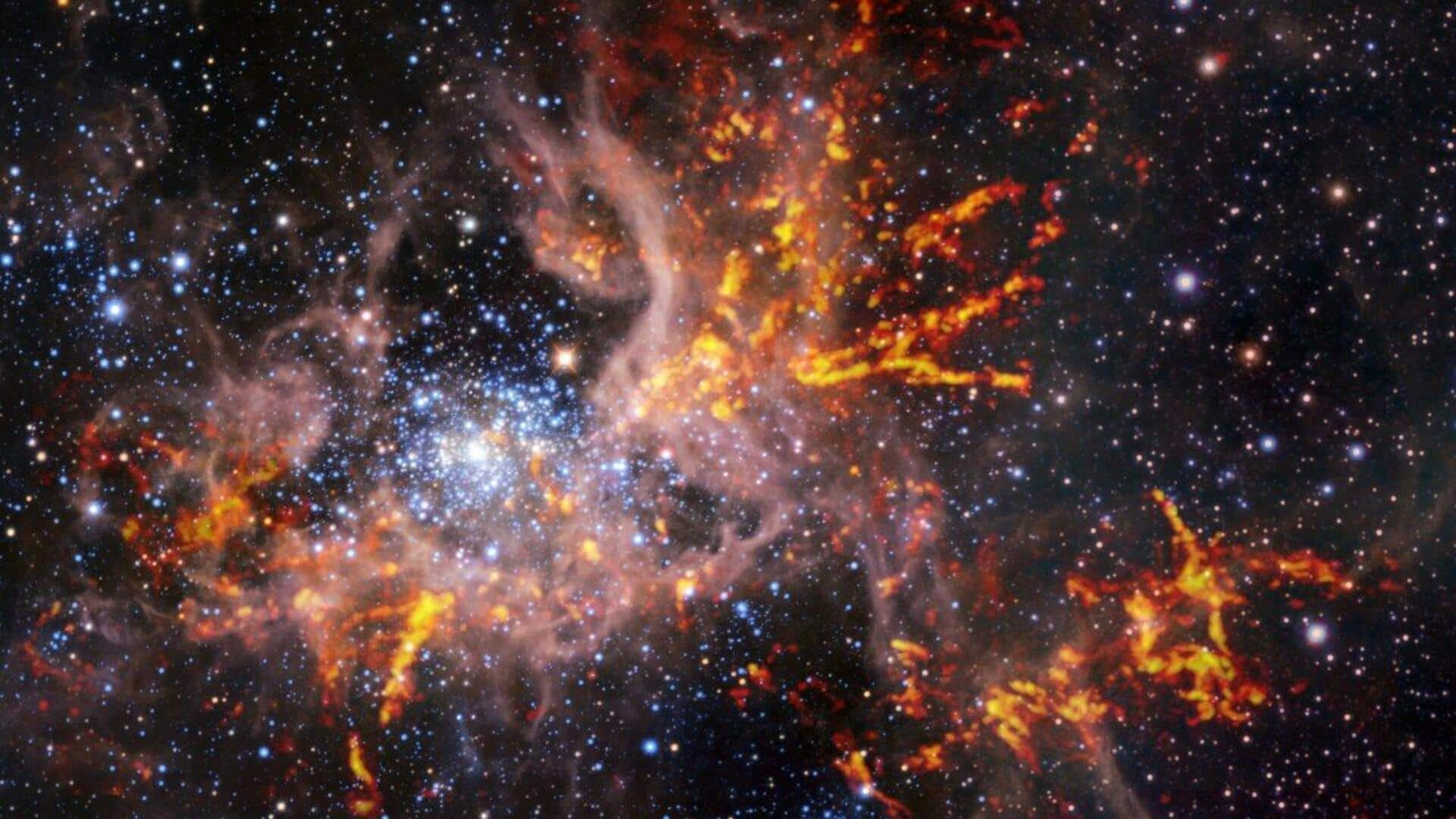
JWST finds a small star-forming complex: What's so special?
What's the story
Astronomers have discovered a faint and small star-forming complex using the James Webb Space Telescope (JWST). The new complex, named LAP2, was found behind the galaxy cluster Abell 2744. The discovery is detailed in a research paper published on the arXiv preprint server. The finding could provide insights into the formation of Population III stars, which are thought to be the first stars formed after the Big Bang.
Complex characteristics
LAP2 is a small and faint star complex
LAP2, or Lensed And Pristine 2, was detected at a spectroscopic redshift of z = 4.19. The astronomers first obtained two mirrored images, LAP2-a and LAP2-b, through spectroscopic observations. The high magnification factors of these images suggest that LAP2 is a small and faint star complex with an estimated size of less than 33 light-years and intrinsic ultraviolet luminosity of -12.2.
Stellar properties
It has less than 0.6% of solar metallicity
The mass of LAP2 is estimated to be a few tens of thousands of solar masses, while its metallicity is less than 0.6% of solar metallicity. The specific star-formation rate (sSFR) of this complex is 100 per billion years and its age is assumed to be less than 10 million years. These characteristics make LAP2 one of the most metal-poor objects known so far, offering a rare glimpse into galaxies under conditions similar to those in the early universe.
Upcoming research
Future observations will help in understanding of LAP2
The authors of the paper plan more observations of this star-forming complex to further explore its properties. The system is scheduled to be observed with NIRSpec/IFU in prism mode for a total of 17.4 hours.